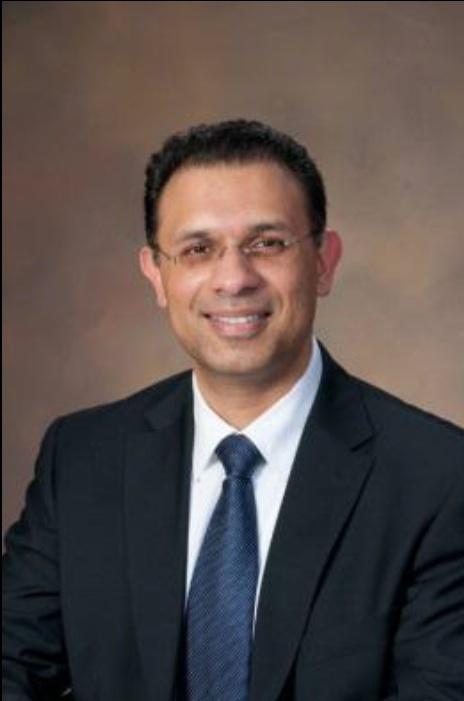Advancements in the field of transplant medicine mean more people than ever before are waiting for organs that can save or prolong their lives.
There is now a desperate shortage of organs available for transplant in nearly all countries except where illegal organ trafficking is rampant, and in China, where the state executes prisoners of conscience so customers can buy their body parts.
But the shortage is not simply because too few people donate, it’s also because doctors are not able to preserve organs long enough once they’ve been removed from a body.

Dr. Zain Khalpey, a Harvard-trained cardiothoracic surgeon, is whittling away at the problems facing organ transplants from several angles, and believes that his research can help offer a solution in the next 5-10 years.
Khalpey, also an assistant professor of at the University of Arizona, is focusing on several promising avenues including preserving and reconditioning organs that would not be viable for transplant in their natural state; using mechanical devices to temporarily support failing hearts; and 3-D printing organ tissues.
Reconditioning
As many as 70-80 percent of available donor hearts and lungs are thrown away each year due to unforeseen issues, like disease or trauma to the organ.
The Donor Network of Arizona has allowed Khalpey to use hearts and lungs that would otherwise be discarded for his research. In his lab, hearts and lungs undergo a form of bioengineering known as “decellularization,” where the organ is stripped of all cells, blood, and other potentially immunologically offensive agents.
After this process all that’s left is a bioscaffold, which is the structure and architecture of the organ minus its cellular constituents. This bioscaffold architecture consists largely of collagen and elastin.
Next, in customized bioreactors, chambers that allow scientists to reproduce the conditions inside the human body, the researchers are working to re-cellularize these bioscaffolds with human stem cells including the cells from patients in need of an organ.

If a patient’s own bone marrow cells are used to re-cellurize the scaffolds, they would not need take immune-suppressing drugs afterwards.
Organs for rodents have been successfully re-cellurized from bioscaffolds, although the process needs more study and refinement before it’s ready for humans, and is still about five years away, Khalpey said.
Preservation
Khalpey’s team is also working on organ preservation—extending the time between when an organ can be removed from the donor to when it can be safely transplanted into a recipient.
Current data from the International Society for Heart & Lung Transplantation registry says that if the time between removal and transplantation is more than six hours, the rate partial or total organ failure greatly increases.
If lungs and hearts are not transplanted within 6 hours they start to breakdown, and after 12 hours, lungs and hearts are usually no longer considered usable since cells have degenerated too much. Other organs last somewhat longer: kidneys hold up well for up to 30 hours, while livers and pancreases are best within 12 hours.
To increase the time an organ is viable, the Khalpey’s team is working to better understand cellular metabolism and the bioenergetics of cells, especially how they respond to different organ preservation solutions.
They have already developed solutions, which if used with the right technology, can extend the window of usability for hearts and lungs to twice or even three times as long.
Heart Help
Some heart transplant patients’ lives can already be extended with mechanical hearts.
In August 1985 the first artificial heart was successfully used by Dr. Jack Copeland at University Medical Center in Arizona, as a bridge for a human heart transplant. From then on, Arizona has been a hub of artificial heart development and implementation.
Bridges allow patients to live for weeks, months, or even years, while they wait for a heart transplant. Kidney bridges are also available to help with dialysis if a patient has kidney failure.
Khalpey, who regularly uses heart bridges, said the mechanical devices give patients a better quality of life independent of life-support systems, and more time with their families while they wait for donor organs to become available.
These bridges also give desperate patients an alternative to seeking organs on the black market.
3-D Bioprinting
In recent years the technology has developed to allow 3-D bioprinting. Over the past couple months, one of Khalpey’s MD-PhD students built a customized 3-D bioprinter that will allow his lab to print biological materials and stem cells.
The student, Alice Ferng, plans to use the printer to create artificial tissues and help patch-up organs that would otherwise be unusable for transplantation.
She estimates that these technologies could be available in as little as 2-3 years.
So although the wait for these lifesaving technologies is still long for many of today’s patients, in a few years the situation may be very different with patients facing much shorter wait times for hearts and lungs.
“In 5-10 years hybrid stem cell therapies and/or bioartificial organs may reduce the transplant waiting lists. Patients will likely see the effects on the waiting list if we bio-manufacture 10-20 percent of them for implant,” Khalpey said.


Friends Read Free